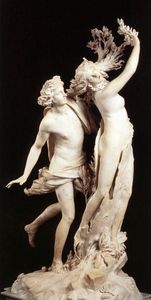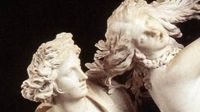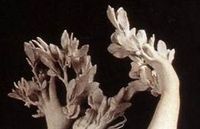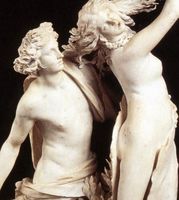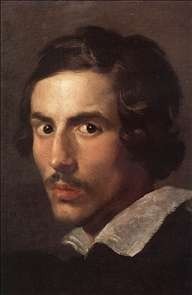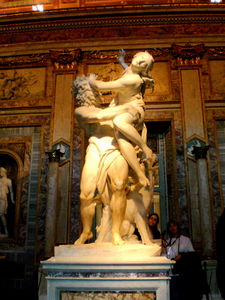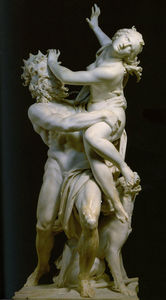Apollo and Daphne
- Date of Creation:
- 1625
- Height (cm):
- 243.00
- Medium:
- Stone
- Subject:
- Figure
- Art Movement:
- Baroque
- Created By:
- Current Location:
- Rome, Italy
- Displayed at:
- Galleria Borghese
- Owner:
- Galleria Borghese
- Apollo and Daphne Page's Content
- Story / Theme
- Analysis
- Related Sculptures
- Artist
- Art Period
- Bibliography
Apollo and Daphne Story / Theme
This sculpture is inspired by a tale from book I of Ovid's Metamorphosis, which recounts how one day Apollo (God of Light and Poetry) teased an arrow-wielding Cupid, calling him too young a boy to be fit to handle such dangerous weapons. Out of spite, Cupid then pricked him with one of his amour-inducing arrows, causing the god to fall madly in love with the passing-by river nymph Daphne. However, Daphne was devoted to the goddess Diana, and had resolved never to marry and to remain a virgin for her entire life.
When Apollo pursued her, driven by his lust, she ran away in panic, calling to her father the river God to help her. He heeded her prayer by transforming her into a laurel tree. Apollo declared that if she would never be his wife, she would at least be his tree, and it is for this reason that he imbued the tree with eternal youth and adopted the crown of laurel leaves, which subsequently became the symbol of Olympic victories and Roman emperors.
The Commission:
Cardinal Scipione Borghese commissioned Apollo and Daphne from Bernini in 1622 to replace the Rape of Persephone that he had given to Cardinal Ludovisi. Although it has since been moved into the center of the room, originally the sculpture was located near the wall, such that the viewer would first approach it from behind.
In order to instill the pagan-inspired artwork with a proper Christian morality, the base was engraved with a Latin couplet composed by Cardinal Maffeo Barberini (the soon-to-be Pope Urban VIII), reading;
"Those who love to pursue fleeing forms of pleasure,
In the end find only leaves and bitter berries in their hands."
Apollo and Daphne Analysis
This is the sculpture that secured the young Bernini international fame for its breathtaking beauty, innovative composition, and technical virtuosity.
Drama:
Like the Rape of Persephone, in Apollo and Daphne Bernini depicts the most dramatic scene in the story. In a virtuoso feat of craftsmanship Bernini shows Daphne in the process of becoming a tree, with bark creeping over her legs and leaves and branches sprouting out of her fingers.
Movement:
One element of Bernini's sculpture that makes him markedly different from preceding artists is the way he manages to catch an utterly transient moment in the immobile medium of stone. His figures often seem to be in the midst of speaking or screaming, and the viewer feels as if he had intruded upon an intimate moment.
Narration:
The narrative element is emphasized unusually heavily for a sculpture. While pieces of sculpture were traditionally designed to be seen from one particular angle (an optimal viewpoint), no such viewpoint exists here; the viewer has to walk all the way around the sculpture for the maximum effect.
When approaching the sculpture from behind, Daphne's body is obscured by Apollo, and only bits of the tree are visible, but as the viewer walks around, he discovers Daphne's body. Many art historians describe this cinematic optical effect as being like the actual metamorphosis was taking place before the viewer's eyes, like a kind of movie in stone.
Apollo and Daphne Related Sculptures
Apollo and Daphne Artist
Bernini forever changed the face of the city of Rome and single-handedly launched the style that would dominate seventeenth-century Italian sculpture.
Heralded by many in his lifetime as the heir of Michelangelo, Gian Lorenzo Bernini worked primarily in a steady stream of critical success. He produced various sculptures for the Borghese Family and Apollo and Daphne was their last commissioned and is among Bernini's most popular artworks.
During his career Bernini had no shortage of commissions, much to the annoyance of other artists and imitators. He was one of the most admired and sought-after of artists, with the highest of reputations. Italian and French contemporaries praised the artist with detailed biographies, sure of the genius in their midst.
Naturally Bernini had his fair share of devoted followers. From contemporaries who worked directly under him or competed with him for commissions, up to modern artists who looked to his use of emotional multimedia design for inspiration, a multitude of artists can thank Bernini for the development of their own styles.
However in the backlash against the Baroque that occurred with the advent of Neoclassicism, the accolades faded into harsher criticisms.
Though the Baroque and Bernini along with it went out of fashion for a long period of time, in the 20th century he was "rediscovered" as a true master of realism and emotion, earning a renewed respect and influence on a new generation of artists, which continues up until this day.
Apollo and Daphne Art Period
Bernini's career spans the height of the Italian Baroque. Baroque art is profoundly tied to the religious and political context of 16th and 17th century Italy: after the Protestant Reformation, the Catholic Church launched its own Counter-Reformation to reaffirm its power and attract more followers to the faith.
In order to do so, the leaders of the church called for artistic spectacles that would captivate the attention, stimulate the senses, and elevate the soul: in consequence, Baroque art tends to the massive, dramatic, and theatrical.
Bernini's sculptures are recognizable for their theatrical, engaging drama, dynamism, tension, texture, and naturalism. The last two criteria (texture and naturalism) are perhaps the most particular to Bernini: no one can make stone convey soft skin, curling hair, or crinkling fabrics the way Bernini can.
His sculptures are also unique for the careful attention Bernini pays to the effects of light and shadow, effects which are traditionally more important to the painter than the sculptor. Many elements of Bernini's style reveal the influence of Mannerist and Hellenistic sculpture.
Apollo and Daphne Bibliography
Some of the most important academic resources on Bernini and his works include the following;
• Bauer, George, ed. Bernini in Perspective. Prentice-Hall, 1976
• Borsi, Franco. Bernini. Trans. Robert Erich Wolf. Rizzoli, 1984
• Gould, Cecil. Bernini in France: An Episode in Seventeenth-Century History. Weidenfeld and Nicolson, 1981
• Hibbard, Howard. Bernini. Penguin Books, 1965
• Lavin, Irving. Bernini and the Unity of the Visual Arts. For Pierpont Morgan Library by Oxford University Press, 1980
• Magnuson, Torgil. Rome in the Age of Bernini. Almqvist & Wiksell International
• Morissey, J. P. The Genius in the Design: Bernini, Borromini, and the Rivalry that Transformed Rome. Duckworth, 2005
• Wittkower, Rudolf. Gian Lorenzo Bernini: The Sculptor of the Roman Baroque. Cornell University Press, 1981

